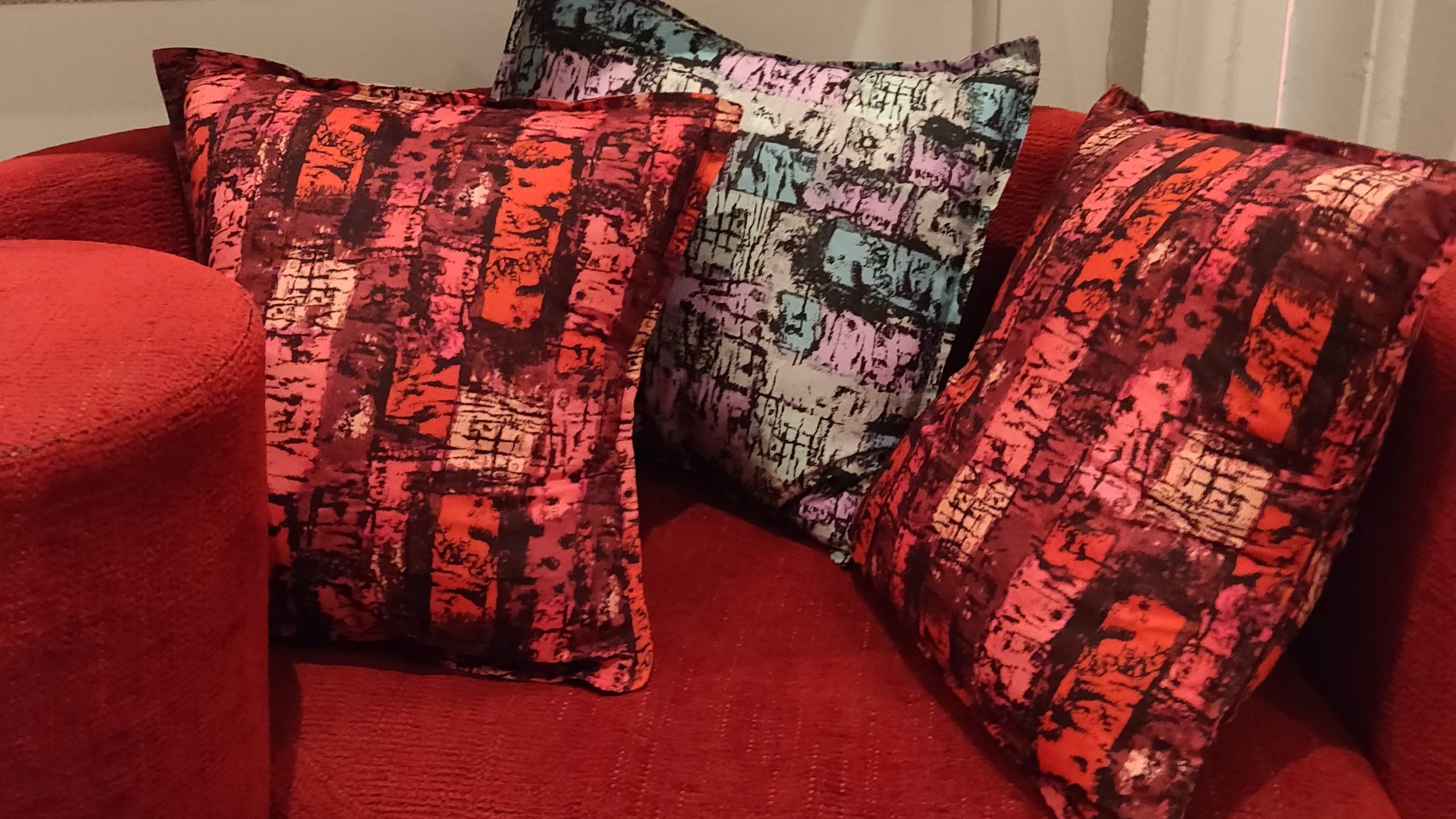A Salute to Textiles: Inspired by Althea McNish
Interior Designers have long realized that the successful route to a spectacular interior is, in part, to use considered colour, texture, light and pattern. This can be achieved by the clever use of fabric selections we use for decorations, like wall tapestry, cushion covers or practical applications like fabric curtains.
Designers need to use their skills in colour coordination, to provide a comfortable, well lit, acoustically sound, secure space that is beautifully decorated. Textiles can assist in all of those for our clients.
The Venetians covered entire walls in their homes with upholstered silk fabrics. The Victorians loved loud floral and chintz draperies. Indians use pretty stuffed pillows in a kaleidoscope of colours. The Turkish use flat-woven patterned rectangles on the floor in various patterns and colours. The English, post-war, used ornamental mats called doilies on the arms of chairs and sofa backs perpetuating the Victorian habit. Delicate crocheted fabric,* usually white and round to enhance whatever was placed on them, like vases or cakes.
*Crochet, like knitting, is a clever process of creating a patterned textile by interlocking loops of yarn or thread.
The Africans made Kente fabric historically reserved for the Ashanti royalty and wealthy classes. The fabric is dyed from regional flora resulting in a strong colourfast fabric. Now, we can all enjoy this cloth, it is used within the soft furnishings industry in the form of blankets, throws, cushion covers, lampshades and tablecloths.
In the domestic household, the obvious fabric-laden room is the bedroom and we continually look for more and more reasons to introduce fabric into this area. Maybe because it is our personal sanctuary or a comfortable place to unwind at the end of the day. So there are duvets, duvet covers, blankets, sheets, throws, pillowcases, lampshades, curtains, upholstered headboards and benches. The fabric here can buffer sound, insulate, create visual interest, boost our mood, keep us warm or just provide comfort.
We introduce fabric into every other room in the home but to a lesser extent. In our need to introduce colour and pattern to decorate a room some of the following are used. A table runner, a sofa, a quilted oven glove, a lampshade, a bolster, and towels in the bathroom made of thick absorbent terry cloth to name a few.
All fabrics have their characteristics and each is more suitable for one use over another. Embroidered linen, Irish Linen, raw linen, silk, velvets, chinoiserie, fleur de lis, gingham, cotton, brocades, herringbone, houndstooth, cashmere, ticking, polyester blends, satins, wools and the current “superstar” boucle.
Boucle is often made from wool but the interest is in the yarn that is not straight but irregular, looped & curly making the finished item nubbly and fleecy in its appearance. The home market with its current interest in mid-century has once again embraced this creamy fabric that is tactile, textured, cuddly and adapts well to curved furniture. Known also for its acoustic qualities.
Textiles is a huge industry made all the more exciting by the creativity, vision, innovation & talented artists and designers within it. The interpretations and influences of global cultures from far and near make fabrics even more exciting with patterns and colours constantly being reinvented. Many indigenous peoples have used vegetable dyes on their fabrics for centuries to show off their creativity and produce rich or muted colours.
Althea McNish a British textile designer originally from Trinidad renown for her richly coloured, tropical artistic designs, Trisha Guild a British designer known for her luxurious & radiant colour palettes and Orla Kiely an Irish designer known for her colourful retro graphic prints.
Althea McNish: Colour is Mine is sponsored by Liberty Fabrics
In conclusion, yes we could use plants, wood, ornate metals, painted canvas, paper, rice paper, wallpaper, carpets, straw, paint, sea shells, feathers or even ceramics if we did not have fabrics. What a significant loss that would be for our living and working spaces.
All images were taken at the ‘Althea McNish: Colour is Mine’ exhibit at William Morris Gallery






